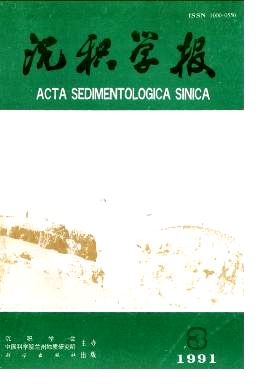Sedimentary Model and Evolution of Devonian "Nandan Anoxic Basin" in Guangxi Province
- Received Date: 1989-07-25
- Publish Date: 1991-09-10
Abstract: Based on Rhoads-Morse-Byers Model of biofacies in an anoxic basin with consideration of the depth of water, the anoxic basin deposits can be downwards divided into oxygen-rich zone (oxygenate zone), oxygen-weak zone and oxygen-free zone. Corresponded with them are the three biozones as aerobic zone, dysaerobic zone and anaerobic zone. According to the model, this paper deals with the characteristics of the Devonian deposits and biotas in Nandan, Guangxi Province. The Devonian deposits in this region are supposed to be the anoxic basin rocks accummulated in a rifted trough environment. As the result of the increase of separating of earth crust in the end of Early Devonian, the oxygen-weak deposits were presented at Luofu, the central zone of the basin, and lasted into Middle Devonian. At the margin of the basin, such as in Mangchang, delta deposit were occurred in Nabiao age (D21) At the begining of Late Devonian, the oxygen-free sediments with volcanic tuff were deposited in the basin, then the basin began to inversion in the late stage. Summarily, there are four stages that can be divided during the evolution of Devonian sediments and biotas in Nandan anoxic basin: (1) oxygen-rich (oxygenate)-aerobic (D11), (2)oxygen-weak-dysaerobic (D12D2), (3)oxygen-free naerobic (D31), and (4) oxygen-weak -Hiysaerobic(D32).
| Citation: | Xin Jianrong. Sedimentary Model and Evolution of Devonian "Nandan Anoxic Basin" in Guangxi Province[J]. Acta Sedimentologica Sinica, 1991, 9(3): 90-97. |






 DownLoad:
DownLoad: